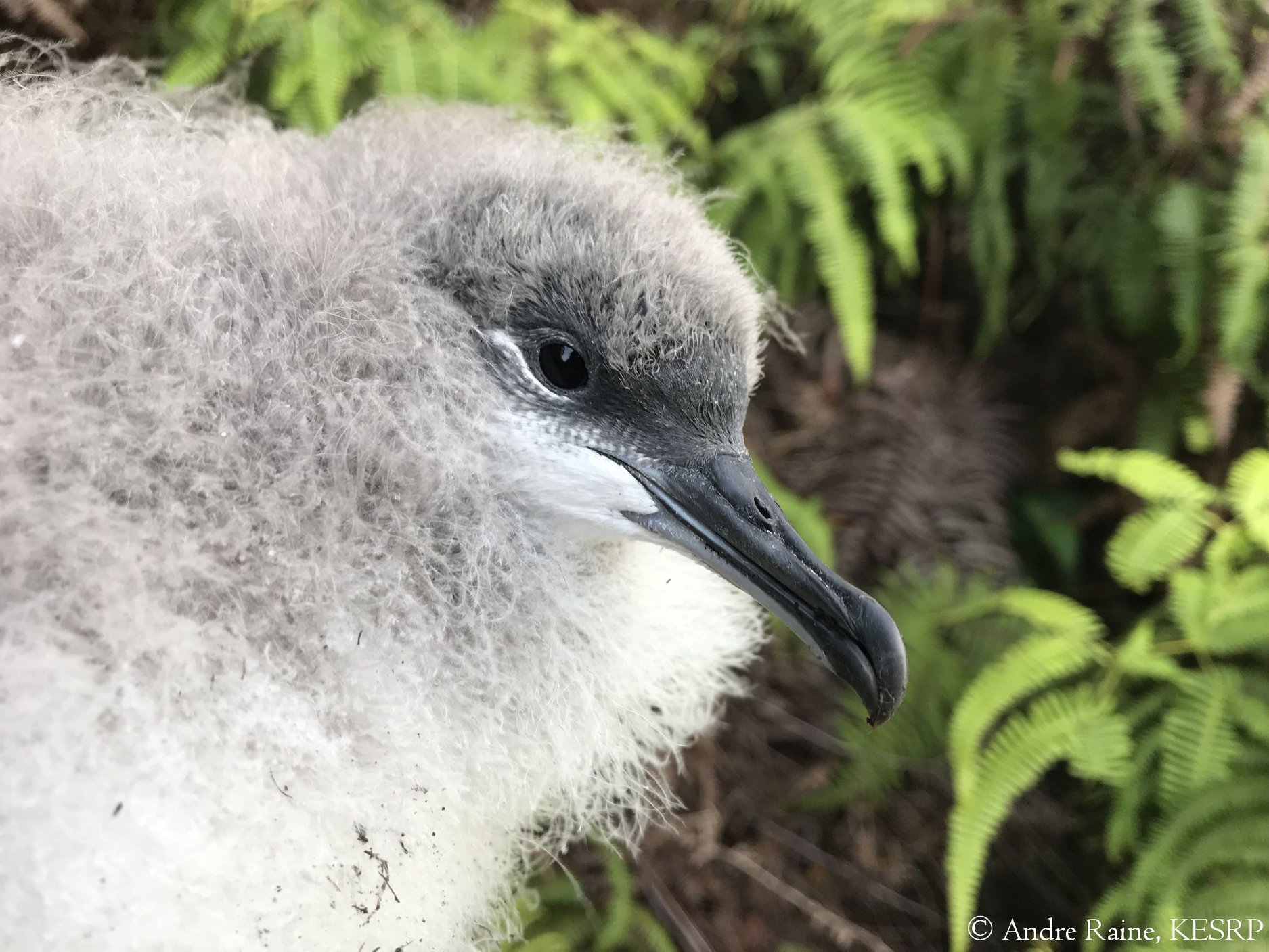 A Newell's Shearwater chick; photograph by Andre Raine. According to the study, Newell's Shearwater populations decreased significantly on Kaua'i from the 1980's, only stabilising from approximately 2012
A Newell's Shearwater chick; photograph by Andre Raine. According to the study, Newell's Shearwater populations decreased significantly on Kaua'i from the 1980's, only stabilising from approximately 2012
David Ainley (H.T. Harvey & Associates Ecological Consultants, California, USA) and colleagues have published in the journal Marine Ornithology on multi-decadal population trends of five seabird species of the Hawaiian Island, Kaua'i.
The paper’s abstract follows,
“Population trends of seabirds nesting on Kaua‘i in the Hawaiian Islands, USA, were assessed across four decades using data from the Save Our Shearwaters (SOS) program. Started in 1979, the SOS database was intended to track the incidence of attraction of Kaua‘i's seabirds to artificial lights, but recovery rate data also became useful to index population trends. These data documented precipitous declines of Newell's Shearwater Puffinus newelli through 2017. Here we expand on those efforts by including four additional species and consider data to 2018. All five species exhibited increasing trends during SOS's first decade, coincidental with increasing human population, suburban infrastructure, and public awareness. Counts of the once-numerous Newell's Shearwater decreased sharply beginning in the late 1980s, but stabilized around 2012. Since that approximate time, counts of Wedge-tailed Shearwater Ardenna pacifica and White-tailed Tropicbird Phaethon lepturus have increased. Conversely, counts of Hawaiian Petrel Pterodroma sandwichensis and Band-rumped Storm Petrel Hydrobates castro have remained stable since 1990. The implications of sizable decreases in a population are rarely considered from a community ecology perspective, but in this case, such an examination is possible: the decline of Newell's Shearwater may have led to a competitive release of trophic resources and nesting habitat, benefitting Wedge-tailed Shearwaters and White-tailed Tropicbirds, respectively. We also explore other issues potentially explaining observed trends. Clearly the SOS program is an important contributor to the success of both seabird conservation, by rehabilitating seabirds grounded by artificial lights, and management, by documenting long-term population changes that would have otherwise been unknown.”
Reference:
Ainley, D., Schneider, S. & Spencer, G. 2023. Disparate decadal trends in Kaua'i seabird populations: possible effects of resource competition and anthropogenic impacts. Marine Ornithology 51: 47 – 54
26 April 2023

 English
English  Français
Français  Español
Español